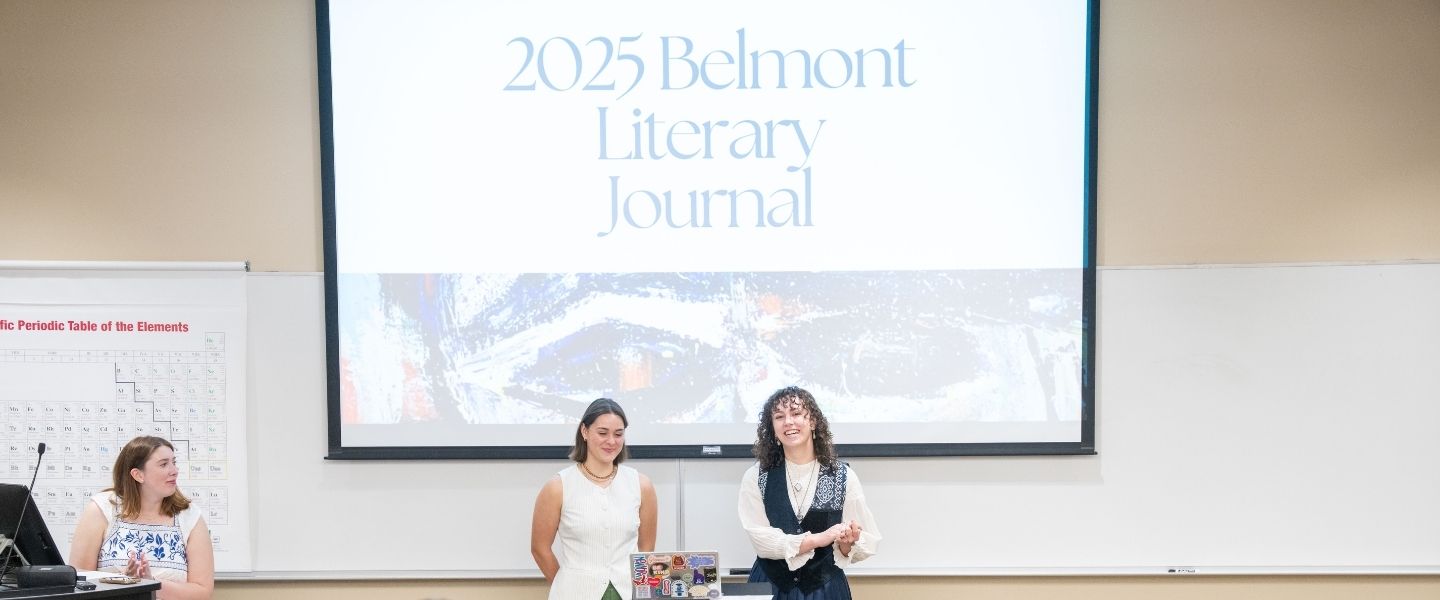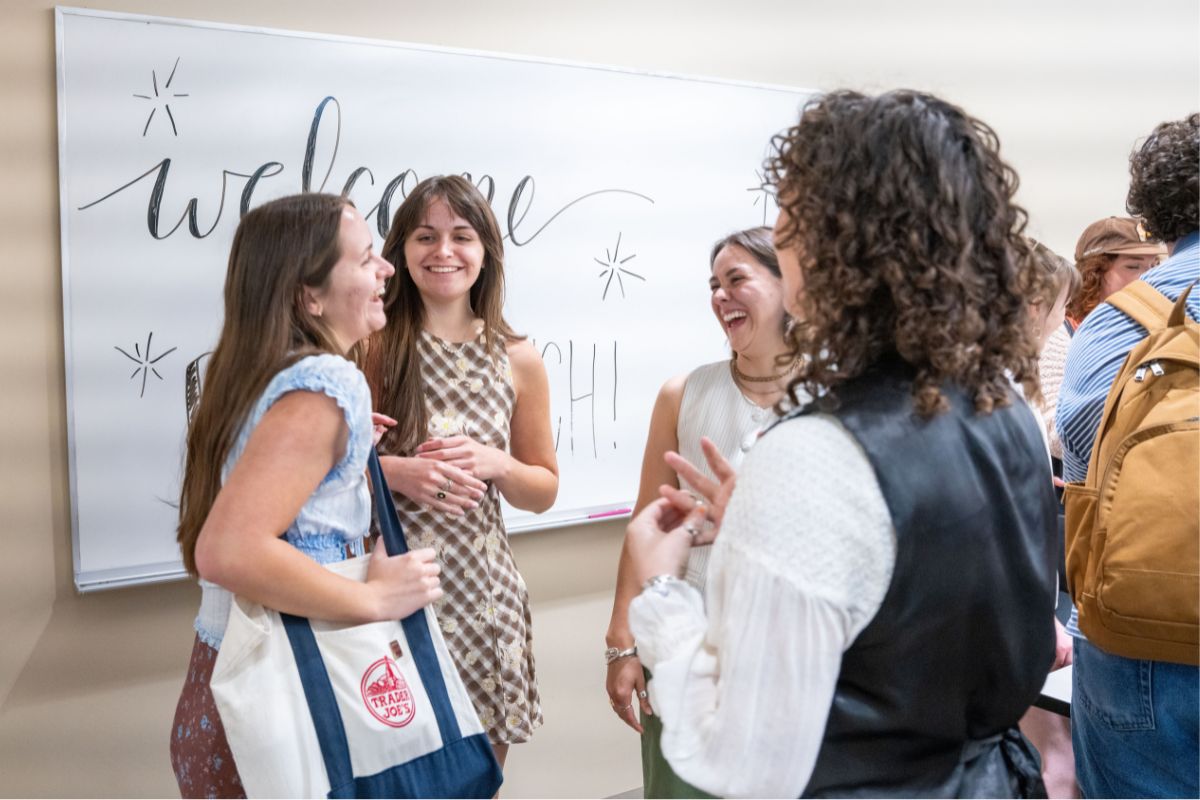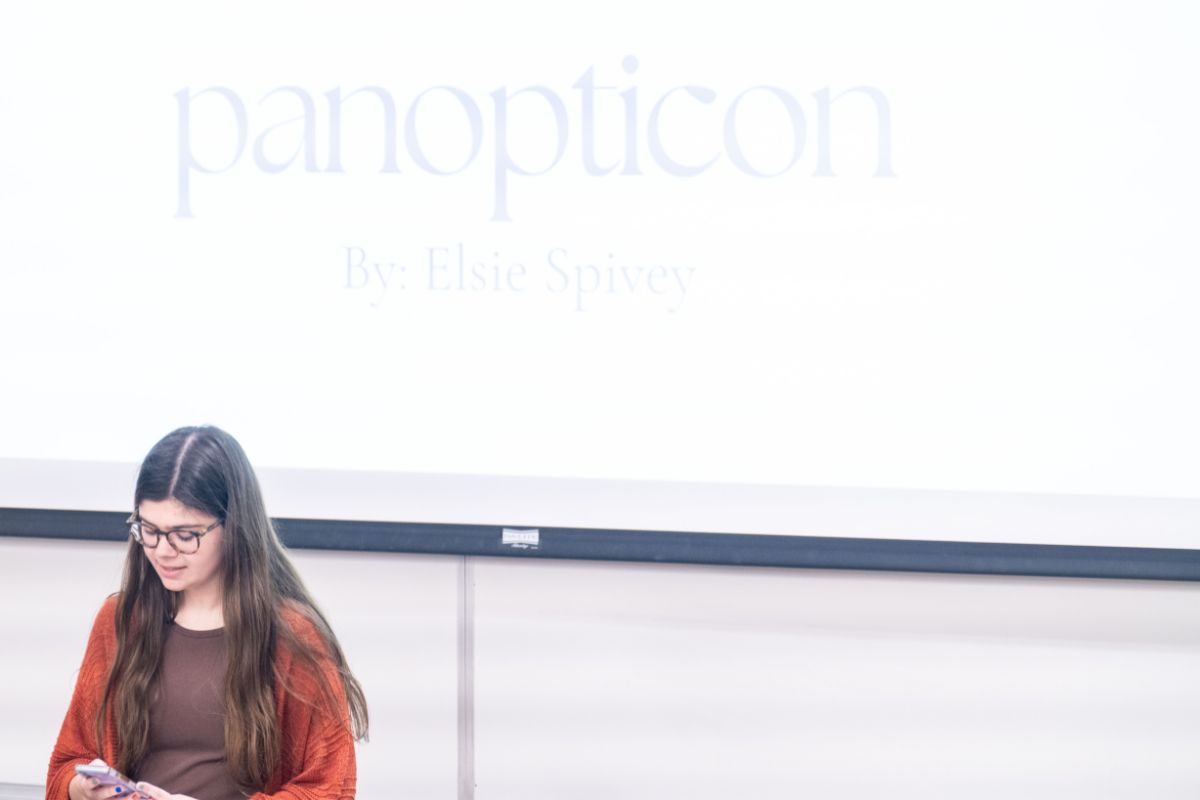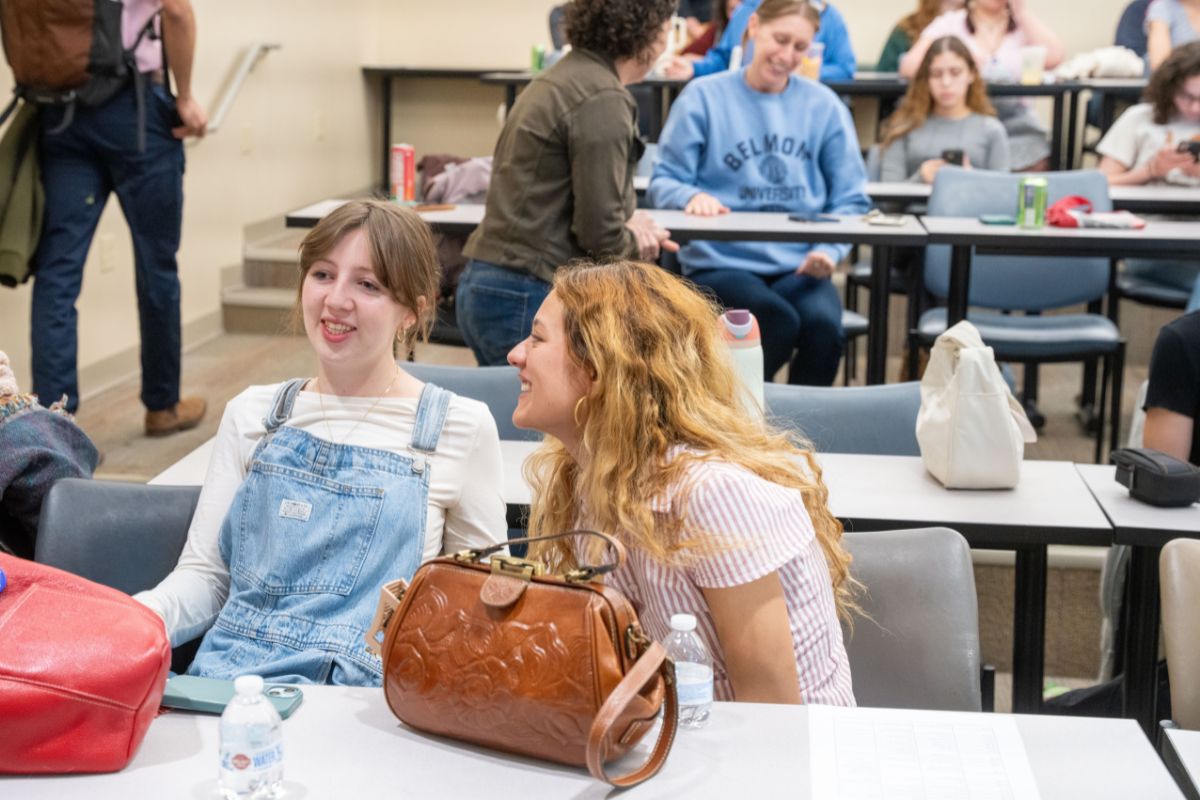How the Literary Journal embodies Belmont’s creative and collaborative spirit
You do not have to be an English major to be a published author, editor or publisher at Belmont.
Every other semester, a class is offered that allows students to step into these roles and publish submissions written by their peers.
Formally, this class is listed as “Literary Editing and Context.” Casually, its simply referred to as the Belmont Literary Journal.
In this non-traditional class, students from across disciplines — psychology, music business, publishing, creative writing and more — gather to curate an annual collection of the best written work students have to offer, creating a creative community that defines Belmont literature.
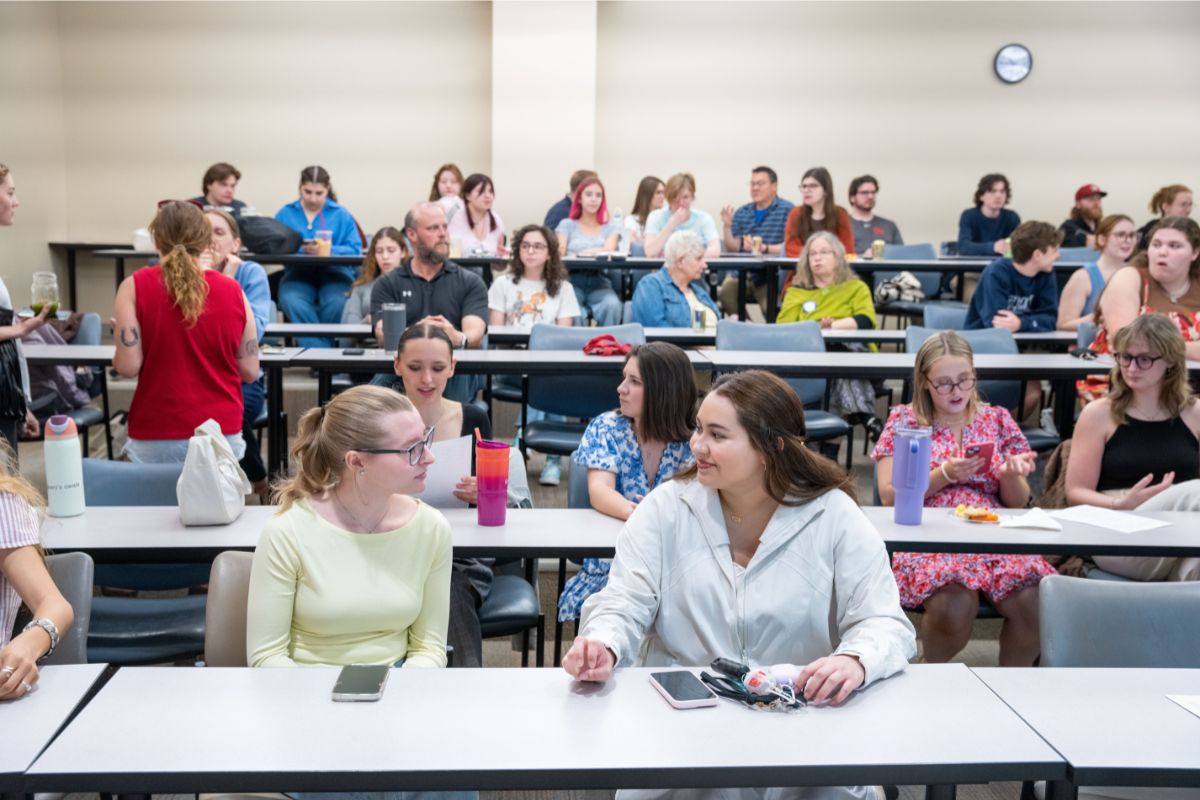
People from across campus gather at the 2025 Literary Journal launch party
More Than Just ‘Writing’
The Literary Journal professor/faculty advisor rotates, with Dr. Susan Finch, associate dean of the College of Liberal Arts and Social Sciences and professor of English, currently serving in the role.
However, that does not mean the Journal itself is not student-run.
“Dr. Finch ran the class, but us students ran the Journal — the operations, its creation, those kinds of things,” said 2025 Journal Co-Editor and junior entertainment industries major Macy Thomas. “We create the schedules, pick the submissions, run the social media and communications, manage the website, all that.”
Thomas and her co-editor Natalie Fountain not only sifted through poetry, fiction, creative nonfiction and visual art submissions from members of the Literary Journal, but from any student across campus who submitted their work for consideration.
As a result of so many boxes to check, collaboration within the Journal is paramount. Students learn how to tap into their strengths, delegate their weaknesses and discover how to represent the voices of their campus community.
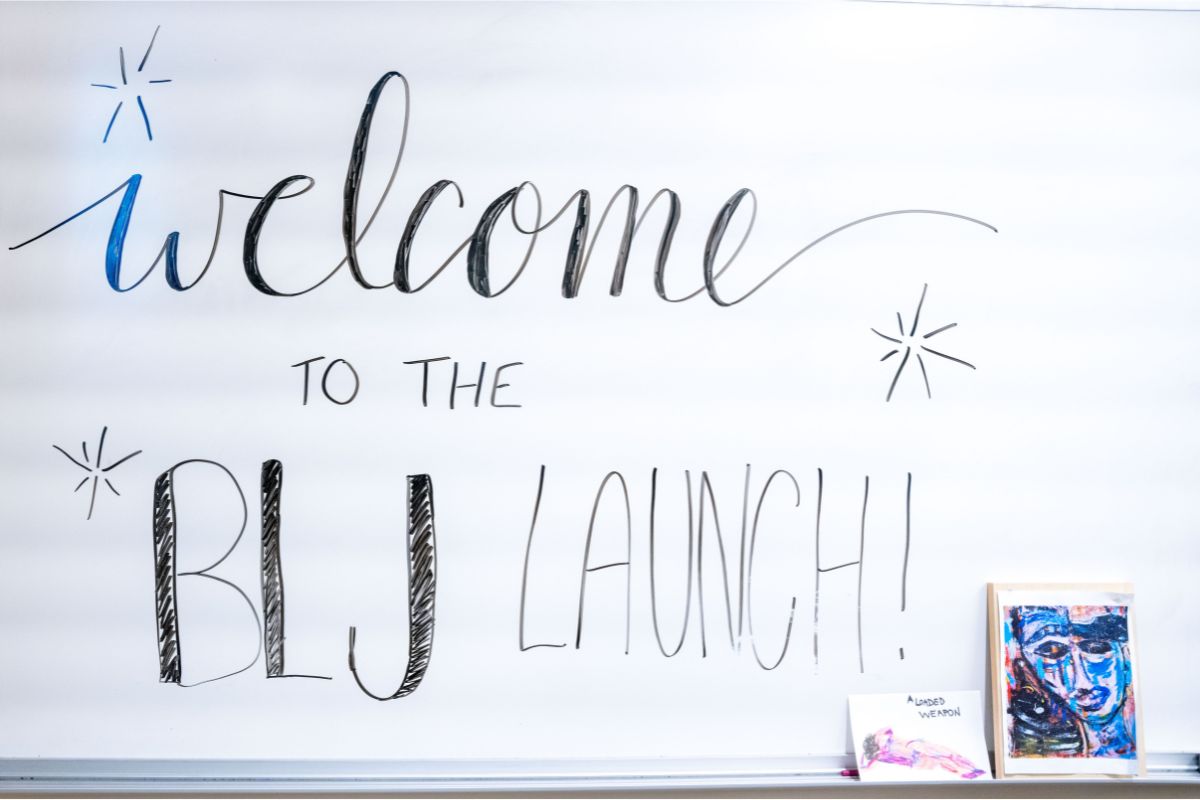
The Full Publication Experience
The Literary Journal also serves to mirror an authentic publishing experience for students involved.
All submissions are read anonymously with only student ID numbers attached, creating the same dynamic professional writers face when submitting to established literary magazines or book publishers.
“You're getting the real experience of what a professional writer does," Finch said. "You're sending to an audience that does not know you and doesn't know your intentions, and they're going to judge your work based on what's on the page."
For Thomas, the ability to discern objectively good writing while setting aside any emotional connection to a piece or its author was a new skill she was able to hone.
"I thought I had a decent sense of what made a piece of writing good going into it, but on this side of the process, that really changed,” she said.
Creating Community in an Isolating Industry
Writing can be a lonely art at times, siloing authors away to toil and critique themselves ad nauseum. To counter this, the Journal seeks to facilitate genuine community in ways that writing, by nature, lacks.
The annual Literary Journal launch party at the end of the semester brings together writers, artists and editors — many revealing the face behind the published work after months of anonymity for the first time.
"So many writers come and they're just like, 'Thank you for publishing me. Thank you for seeing me,'" Finch shared. "They're so excited to be a part of it."
Beyond just being published, students have reported using their Journal experience in job interviews. They cite collaboration skills, initiative and project management, according to Thomas.
A Reflection of Belmont’s Spirit
Lastly, a tremendous source of pride for the Journal is one previously noted — it reflects Belmont in a way that is true to the university’s creative identity.
“It’s written by our students, published by our students, the artwork is by our students,” said Finch. “We are a very creative campus and sometimes we only see that in small areas, but projects like this really bring it all together.”
Thomas also reflected on how the collaborative and creative nature of the Journal simply felt like Belmont (adj.).
“We never intentionally chose pieces that reflect Belmont as a university, but it’s always ironic how it ends up happening that way,” she said. “We have a community of people here who love to write stories and poetry and music, and sometimes you can just tell a Belmont student wrote something, and there’s something special about that.”
The Literary Journal stands as proof that when creative minds with different interests but one shared passion collaborate, the product can be something truly special. It reflects the vibrant artistic community that makes Belmont a destination for so many.
Learn More
Learn more about the programs in this story

